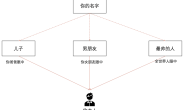java对oracle的常用操作示例代码
import java.sql.Connection; import java.sql.DriverManager; import java.sql.ResultSet; import java.sql.SQLException; import java.sql.Statement; public class DBTools { // 定义一个方法,用来得到一个"新的"连接对象 public static Connection getConnection() { Connection conn = null; String driverName = "oracle.jdbc.driver.OracleDriver"; String url = "jdbc:oracle:thin:@localhost:1521:ora9i"; String userName = "scott"; String passWord = "tiger"; try { Class.forName(driverName); conn = DriverManager.getConnection(url,userName,passWord ); } catch (Exception e) { // TODO Auto-generated catch block e.printStackTrace(); } return conn; } public static void closeConn(Connection conn) { try { if(conn != null) { conn.close(); } } catch (SQLException e) { // TODO Auto-generated catch block e.printStackTrace(); } } public static void closeState(Statement state) { try { if(state != null) { state.close(); } } catch (SQLException e) { // TODO Auto-generated catch block e.printStackTrace(); } } public static void closeRs(ResultSet rs) { try { if(rs != null) { rs.close(); } } catch (SQLException e) { // TODO Auto-generated catch block e.printStackTrace(); } } } import java.sql.ResultSet; import java.sql.Statement; import java.util.ArrayList; import com.tianyitime.notebook.support.userPO.UserPO; import com.tianyitime.notebook.support.util.DBTools; public class UserDAO { // 新增user public void saveUserInfo(UserPO upo) { Connection conn = null; Statement state = null; try { conn = DBTools.getConnection(); state = conn.createStatement(); String sql = "insert into notebook_user values ("+getMaxId()+",'"+upo.getYhm()+"','"+upo.getEmail()+"','"+upo.getContent()+"')"; //System.out.println(sql); state.executeUpdate(sql); } catch (Exception ex) { // TODO Auto-generated catch block ex.printStackTrace(); } finally { DBTools.closeState(state); DBTools.closeConn(conn); } } //得到一个数据库中当前Id的最大值 private int getMaxId() { Connection conn = null; Statement state = null; ResultSet rs = null; int maxId = 0; try { conn = DBTools.getConnection(); state = conn.createStatement(); String sql = "select max(id) maxId from notebook_user"; rs = state.executeQuery(sql); //从resultset对象中将数据取出 if(rs.next()) { maxId = rs.getInt("maxId"); } } catch (Exception ex) { // TODO Auto-generated catch block ex.printStackTrace(); } return ++maxId; } // 得到所有的记录 public ArrayList getUserInfo() { Connection conn = null; Statement state = null; ResultSet rs = null; UserPO upo = null; ArrayList al = new ArrayList(); try { conn = DBTools.getConnection(); state = conn.createStatement(); String sql = "select * from notebook_user"; rs = state.executeQuery(sql); //从resultset对象中将数据取出 while(rs.next()) { upo = new UserPO(); int id = rs.getInt("id"); String yhm = rs.getString("yhm"); String email = rs.getString("email"); String content = rs.getString("content"); upo.setId(id); upo.setYhm(yhm); upo.setEmail(email); upo.setContent(content); //将改对象放入已经创建好的集合类对象ArrauyList al.add(upo); } } catch (Exception ex) { // TODO Auto-generated catch block ex.printStackTrace(); } finally { DBTools.closeRs(rs); DBTools.closeState(state); DBTools.closeConn(conn); } return al; } // 删除一条user记录 public void deleteUserInfo(int id) { Connection conn = null; Statement state = null; try { conn = DBTools.getConnection(); state = conn.createStatement(); String sql = "delete from notebook_user where id="+id; //System.out.println(sql); state.executeUpdate(sql); } catch (Exception ex) { // TODO Auto-generated catch block ex.printStackTrace(); } finally { DBTools.closeState(state); DBTools.closeConn(conn); } } // 根据给定的信息得到记录 public ArrayList getUserInfoByInfo(String name,String email,String content) { Connection conn = null; Statement state = null; ResultSet rs = null; UserPO upo = null; ArrayList al = new ArrayList(); try { conn = DBTools.getConnection(); state = conn.createStatement(); String sql = "select * from notebook_user where 1=1 "; if(!"".equals(name) && name != null) { sql += " and yhm like '%"+name+"%'"; } if(!"".equals(email) && email != null) { sql += " and email = '"+email+"'"; } if(!"".equals(content) && content != null) { sql += " and content like '%"+content+"%'"; } sql+=" order by id desc"; rs = state.executeQuery(sql); //从resultset对象中将数据取出 while(rs.next()) { upo = new UserPO(); int id = rs.getInt("id"); String yhm = rs.getString("yhm"); String femail = rs.getString("email"); String fcontent = rs.getString("content"); upo.setId(id); upo.setYhm(yhm); upo.setEmail(femail); upo.setContent(fcontent); //将改对象放入已经创建好的集合类对象ArrauyList al.add(upo); } } catch (Exception ex) { // TODO Auto-generated catch block ex.printStackTrace(); } finally { DBTools.closeRs(rs); DBTools.closeState(state); DBTools.closeConn(conn); } return al; } }



